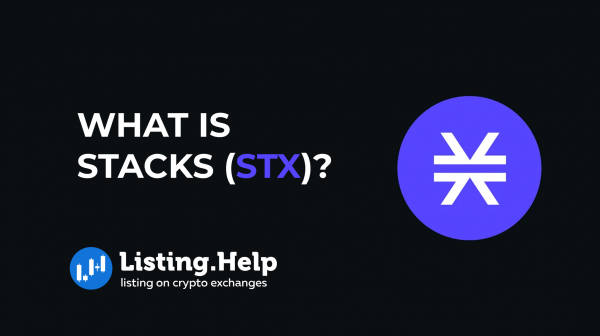What are Hashing and Hash Functions? Popular Hashing Algorithms
 December 23, 2023
December 23, 2023 Updated: January 27 2025, 07:23
Updated: January 27 2025, 07:23
LEAVE A REQUEST
Launching your own token project? Our experts are ready to help with listing on exchanges, market making, marketing and other solutions
SUBMIT APPLICATIONHashing is a process where a variable-sized input is transformed into a fixed-size output using mathematical formulas known as hash functions. These functions are implemented through various hashing algorithms. While not all hash functions are cryptographic, cryptographic hash functions are fundamental in the realm of cryptocurrencies, playing a vital role in ensuring the integrity and security of blockchains and other distributed systems.
Both standard and cryptographic hash functions share a key property: they are deterministic. This means that for a given input, the hash function will consistently produce the same output (often referred to as the digest or hash), as long as the input remains unchanged.
In the context of cryptocurrencies, hashing algorithms are typically designed to be one-way functions. This design implies that while generating the output from a given input is straightforward, reversing the process – deriving the input from the output – is significantly challenging. It requires considerable computing time and resources, making it practically infeasible. The difficulty of reversing a hash function is a measure of its security; the harder it is to determine the original input from the hash output, the more secure the hashing algorithm is considered.
The Importance of Hashing
Hashing plays a vital role across various fields due to its ability to process and verify large quantities of data efficiently. Conventional hash functions are utilized in diverse applications like database lookups, analyzing large files, and managing data. Cryptographic hash functions, however, are more focused on information security tasks such as message authentication and creating digital fingerprints.
In the world of Bitcoin and other cryptocurrencies, cryptographic hash functions are integral. They are crucial in the mining process and are also used in generating new wallet addresses and keys. The significance of hashing truly shines when managing vast amounts of data. By running a large file or dataset through a hash function, one can use the resulting hash to verify the data’s accuracy and integrity quickly. This efficiency is due to the deterministic nature of hash functions, which always produce a consistent, condensed output from the same input, eliminating the need to handle and store bulky data.
Hashing is especially critical in blockchain technology. For instance, the Bitcoin blockchain incorporates hashing in various operations, predominantly mining. Virtually all cryptocurrency protocols employ hashing to group transactions into blocks and to create cryptographic links between these blocks, forming the backbone of the blockchain. This process not only condenses the data but also ensures the integrity and continuity of the blockchain.
What is Hash Function?
At the heart of every hashing algorithm is the hash function, a mathematical mechanism designed to transform an input of any length into a compressed, fixed-length numerical value, known as a hash or hash value. Essentially, this function acts as a processing tool, accepting data of varying lengths and producing a standardized output – the hash.
The specific length of the hash output is determined by the hashing algorithm used. Commonly used hashing algorithms or functions typically generate hashes with lengths varying from 160 to 512 bits. This predetermined length is a key characteristic of hashing functions, ensuring a consistent output size regardless of the size or complexity of the input data.
How does hashing algorithm work?
At the heart of each hashing algorithm lies the hash function, which is essential for converting variable-length input data into a fixed-length hash value. This process includes several key steps:
– The input data is divided into uniform-sized ‘data blocks.’ The size of these blocks varies with different algorithms but is consistent within a specific one, like SHA-1’s 512-bit blocks.
– If an input message is exactly one block in size (e.g., 512 bits for SHA-1), the hash function runs once. For larger messages, the data is split into multiple blocks, with each block processed separately.
– In cases where the message size doesn’t match the block size, a padding technique is employed to divide the message into fixed-size data blocks for hashing.
The hash function processes each block in sequence. The output from one block is combined with the next, continuing until all blocks are processed to produce the final hash value. This method ensures the ‘avalanche effect’: even a small change in the input alters the entire hash value significantly, maintaining the integrity and security of the data.
Popular Hashing Algorithms
Message Digest (MD) Algorithm:
It is a series of cryptographic hash functions, primarily used for creating digital signatures and data integrity checks. The MD family includes several versions, with MD5 being the most widely known. MD algorithms process input data through a series of complex operations, producing a fixed-size hash value, typically 128 bits for MD5. Although once popular, MD5 has seen diminished use in security applications due to vulnerabilities allowing for hash collisions (two different inputs producing the same hash).
Secure Hash Algorithm (SHA):
SHA is a group of cryptographic hash functions designed by the National Security Agency (NSA) and published by the National Institute of Standards and Technology (NIST). Notable for their security and efficiency, SHA algorithms are widely used in various security applications and protocols, including TLS and SSL, PGP, and SSH. SHA comes in several variants, such as SHA-1, SHA-256, and SHA-512, with the number indicating the length of the hash output. SHA-256, part of the SHA-2 family, is particularly noted for its use in Bitcoin’s blockchain.
RACE Integrity Primitives Evaluation Message Digest (RIPEMD):
RIPEMD is a family of cryptographic hash functions developed in Europe. The original RIPEMD, designed as a European alternative to the MD and SHA families, evolved into more advanced versions like RIPEMD-160. RIPEMD-160 is well-regarded for its enhanced security features, producing a 160-bit hash value. It is used in various applications needing data integrity checks and digital signatures, particularly in scenarios where stronger security than MD5 is desired without the computational intensity of the larger SHA variants.
Whirlpool:
It is a cryptographic hash function that produces a 512-bit (64-byte) hash value from input data of any size. Designed by Vincent Rijmen and Paulo S. L. M. Barreto, it is based on a modified Advanced Encryption Standard (AES) algorithm. Whirlpool is known for its robust security features and is used in various security applications and protocols. It processes data in 10 rounds, each involving several complex operations, making it a sturdy choice for ensuring data integrity and security.
RSA:
RSA, named after its creators Rivest, Shamir, and Adleman, is one of the first public-key cryptosystems and is widely used for secure data transmission. Unlike the previously mentioned algorithms, RSA is not a hash function but an encryption and digital signature algorithm. It’s based on the computational difficulty of factoring large integers, a principle that ensures its security. RSA is pivotal in secure communications, enabling encrypted data exchange and authentication through its digital signature capability. The algorithm’s security strength is directly tied to its key size, with larger keys providing higher security levels.
What are Cryptographic Hash Functions?
A cryptographic hash function, which employs cryptographic methods, is designed to be highly secure and resistant to attacks. To “reverse” such a function and determine its original input, one would need to engage in numerous trial-and-error attempts, essentially brute-forcing to match the output. Despite this, there’s a possibility that two different inputs might produce the same output, leading to what’s known as a collision.
For a cryptographic hash function to be deemed secure, it must adhere to three critical properties: collision resistance, preimage resistance, and second-preimage resistance. Each of these properties ensures a certain aspect of the function’s security.
– Collision Resistance: It should be virtually impossible to find two distinct inputs that result in the same hash output.
– Preimage Resistance: Finding the original input from a given hash output should be infeasible, meaning one cannot easily “reverse” the hash function.
– Second-preimage Resistance: It should be impracticable to find a different input that produces a hash collision with a specified input.
These properties form the backbone of the cryptographic hash function’s security, making it an integral part of digital systems and blockchain technology.
Conclusion
Hash functions are essential in computer science, especially in the realm of cryptography, where they secure and authenticate vast amounts of data. They are particularly crucial in cryptocurrency networks, making an understanding of their properties and mechanisms valuable for those interested in blockchain technology. These functions not only maintain data integrity but are also key to the security of digital currencies.

For further insights into blockchain technology, visit our blog at https://listing.help/blog/.







 December 22, 2025
December 22, 2025 








